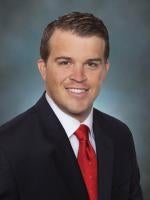As we highlighted here a couple of months ago, the Environmental Protection Agency (EPA) released a proposed rule in March that could significantly expand the scope of the federal government’s jurisdiction under the Clean Water Act (“CWA”). While EPA claims the rule is needed to clarify the scope of the CWA, most regulated businesses have labeled the effort a huge power grab. Since that blog on April 18, 2014, there have been several relevant developments on this topic.
First, EPA published the proposed rule in the Federal Register on April 21, 2014. This official release of the rule started the clock on the original 90-day public comment period, meaning that industry would have until July 21, 2014 to draft and submit their criticism of the rule and suggestions for improvement.
However, EPA later extended the public comment period for an additional 91 days, creating a new deadline of October 20, 2014 (90 days would have put the deadline on a Sunday). This extension was reportedly granted in response to numerous requests from industry and agricultural groups. Interestingly, there is no press release announcing the extension and the official docket for the rule still shows July 21st as the deadline. (EPA’s webpage for the rule gives the October 20 deadline and the extension was reported by several sources)
To date, regulations.gov shows that more than 65,000 comments have been submitted (Search for Docket ID: EPA-HQ-OW-2011-0880).
Finally, the Inside E.P.A. newsletter is reporting that several recent citizen suits have cited language from the proposed rule to justify their claims, (see article titled: Citizen Suits Draw On EPA’s CWA Jurisdiction Rule to Boost Enforcement; subscription required). First, in a case filed in the U.S. District Court for the Southern District of Texas (Galveston Baykeeper v. Trendmaker Homes, et al.), the plaintiffs use “language [that] closely parallels how the EPA and the Corps address “prairie potholes” in the proposed rule to argue that certain potholes are jurisdictional and should not have been filled without a Section 404 permit. In the second case, filed in the District of Colorado (Wildearth Guardians v. Western Sugar Cooperative), the plaintiffs allege a shallow hydrologic connection to a jurisdictional water. This is one of the new types of potentially jurisdictional waters per the proposed rule.
Analysis:
The extension of the public comment period is certainly a positive development for regulated businesses. First, it gives them more time to prepare thorough and persuasive comments that will be more likely to impact the final rule. Second, it recognizes the significant opposition to the proposal and will allow this momentum more time to grow before EPA’s final decision.
With respect to the lawsuits citing the proposed rule, it is unlikely that a court would give much weight to a rule that is not yet final. However, EPA’s position is that the rule does not change the law, but simply clarifies existing law, and this is undoubtedly what the plaintiffs will argue. This approach could backfire, however, if a court finds that these interpretations are not consistent with existing CWA case law and essentially invalidates EPA’s new rule.



 i
i

